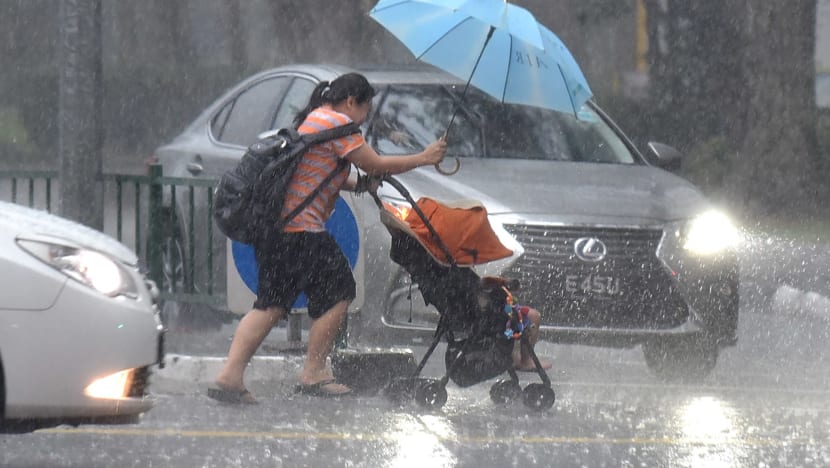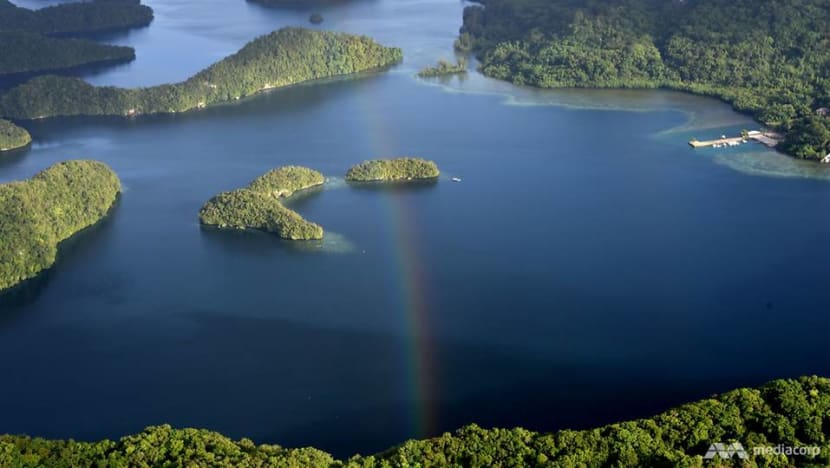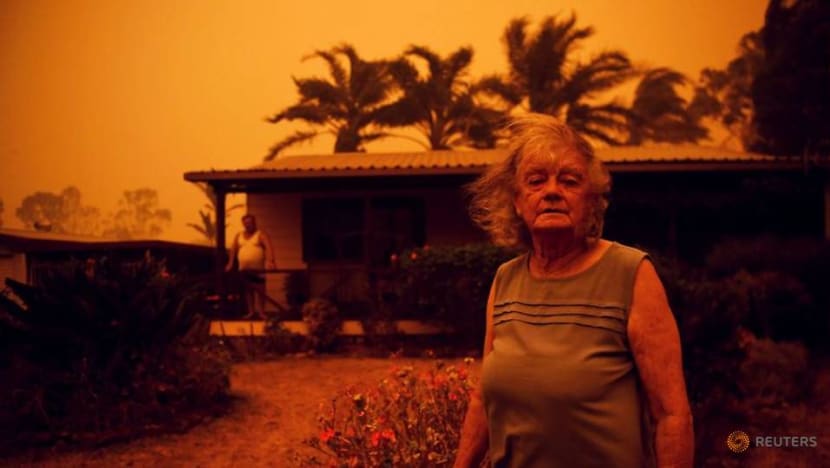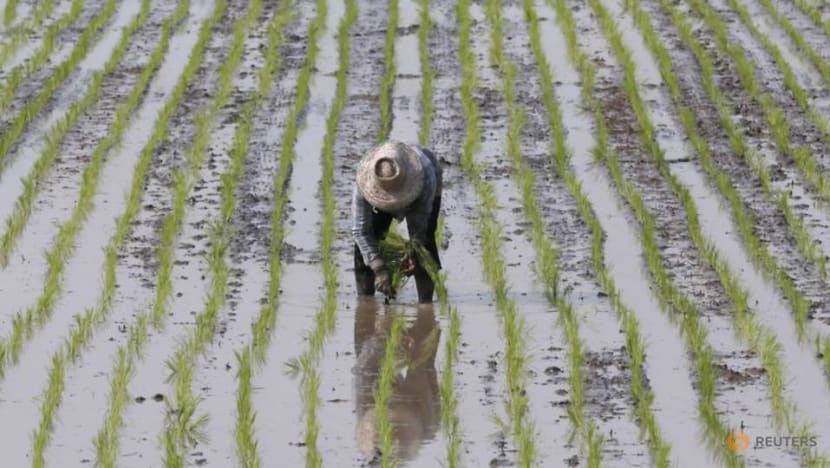Explainer: Why adapting to climate change matters

A woman pushes a pram on the road during heavy rain in Singapore. (File photo: Jeremy Long)
The world today is an estimated 1 degree Celsius hotter than it was during the pre-industrial period from about 1850 to 1900.
This warming from anthropogenic emissions will persist for centuries to millennia, according to the Intergovernmental Panel on Climate Change (IPCC).
Even if greenhouse gas emissions stopped today, climate change is expected to continue. Its effects range from shifting seasons and more frequent and intense extreme weather, to ocean warming and loss of biodiversity.
These processes have a profound impact on human health and safety, from food production and water availability, to vector-borne diseases and the places where we live.
There is now international consensus that both adaptation and mitigation are needed as complementary strategies to respond to climate change.
Alongside mitigation targets, the landmark Paris Agreement commits countries to increase “the ability to adapt to the adverse impacts of climate change and foster climate resilience and low greenhouse gas emissions development, in a manner that does not threaten food production”.
WHY WE MUST ADAPT
Humans are no strangers to adaptation.
We have a long history of anticipating and adjusting to changes in the environment to meet our needs, through practices like crop diversification and irrigation. But climate change will require different strategies and policies.
Sea level rise, which threatens coastal and low-lying areas, is one pressing impact of climate change. The IPCC estimates that oceans will eventually rise by several metres, inundating areas inhabited by some 280 million people.

READ: Tides of change: Rising sea levels threaten homes on pristine paradise of Palau
Small island states are particularly susceptible. For instance, residents of Palau, a tiny nation in the Pacific Ocean, already deal with the daily reality of encroaching waters.
Melting snow and ice on a warming planet are also altering the water cycle. The intensity and frequency of extreme weather events like heatwaves, droughts, floods, cyclones and wildfires are changing, in turn transforming ecosystems and endangering lives.
In July, record-breaking rainfall in China and Japan saw floods and landslides that destroyed life and property. While both countries experience seasonal rains and floods, experts say that climate change exacerbated this year’s conditions.
Australia experienced some of its worst bushfires on record during the summer from 2019 to 2020. Wildfires razed more than 110,000 sq km of land, killing at least 33 people and about 1.5 billion animals. Scientists say that climate change raised the risk of such severe wildfires happening by at least 30 per cent.

READ: Forget a ‘new normal’: Experts say Australia’s worst bushfires still lie ahead
The changing climate affects human systems like agriculture too. In Thailand, the rice harvest has been disrupted by unpredictable weather, such as drier spells in the middle of the wet season that damage young plants.
Many animal species have responded to environmental changes by shifting geographic ranges and patterns of behaviour. This can have further implications on human health. The global population at risk of mosquito-borne diseases like dengue and malaria is set to expand, as higher temperatures open up new mosquito habitats and create prime breeding conditions.
HOW WE CAN ADAPT
Adaptation relies on the science of climate projections, which are based on trajectories of greenhouse gas concentrations in the atmosphere and the corresponding scale of predicted effects.
The IPCC releases global climate projections called Representative Concentration Pathways (RCPs). There are four RCPs covering one stringent mitigation scenario (RCP2.6), two intermediate scenarios (RCP4.5 and RCP6.0) and one very high emissions scenario (RCP8.5).
Since the impacts of climate change vary widely across regions, adaptation planning and implementation are largely carried out at national and municipal levels, using global climate projections while taking local circumstances into account.
Mainstreaming climate change into policy formulation is part of the adaptation process. There are often convergences between national development, disaster risk management and adaptation.
This means that measures like water storage, early warning systems and coastal protection may be introduced for protection from current climate variability, but can also serve as adaptation to future climate change over the long term.
Most adaptation measures are currently focused on constructing defensive infrastructure, such as dams, levees and canals to protect against sea level rise and changing precipitation, according to the IPCC.

Adaptation can involve interventions at the biological and ecological level as well. Biotechnology and genetic modification are used to grow drought- or flood-resistant crops for food security. To protect biodiversity, authorities are establishing conservation areas and migration corridors.
However, the discourse on adaptation is increasingly being expanded to include socio-economic factors. This focuses on how to reduce vulnerability to climate change by understanding its relationship with social indicators like gender, poverty and ethnicity, among others.
In tandem, there is growing interest in how financial mechanisms can contribute to adaptation, as they are a way to spread risk and reduce financial hardship resulting from extreme climate events.
Financial products like insurance can be used to cushion individuals and communities from climate-related shocks. Investors are also becoming more aware of how their portfolios may be affected by climate-related risks, and taking steps to diversify and urge more action on environmental protection.
This is in line with the notion that adaptation is not only about reducing risk and vulnerability to climate change, but also turning them into opportunities.
WHAT SINGAPORE IS DOING
Singapore established the Centre for Climate Research in 2013 to develop robust scientific analysis of climate change impacts.
Government climate projections have found that by 2100, the average sea level around Singapore could rise by up to about 1m. When compounded by high tides, storm surges and intense rainfall, that figure could rise to about 4m.
Prime Minister Lee Hsien Loong has described rising sea levels as a “50 to 100-year problem” that could cost Singapore around S$100 billion or more to tackle.
In 2011, the country’s minimum reclamation level was raised from 3m to 4m above sea level. Key infrastructure like the Changi Airport Terminal 5 and Tuas Terminal mega port will be built even higher, at least 5m above sea level.
Singapore is also exploring Dutch polders – reclaimed land below sea level that is kept dry with canals and pumps – as a method for future reclamation.
READ: Fending off the floods – 5 things to know about polders and how they could work in Singapore
But older buildings and low-lying areas will need coastal defences, to be funded by a S$5 billion Coastal and Flood Protection fund set aside in the 2020 Budget. The fund will also be used to expand drainage infrastructure to cope with increased rainfall.

For Singapore to build resilience against climate-related water and food supply disruptions, the Government is using a strategy of diversification and technological innovation.
The country’s water sources have been diversified to include reclaimed wastewater (NEWater) and desalinated water, which are less dependent on rainfall than local catchment water and imported water.
Singapore imports over 90 per cent of its food. To reduce vulnerability to global supply chain disruptions, the Government has set a target of producing 30 per cent of the country’s nutritional needs by 2030.
But resilience to climate change goes beyond biophysical adaptation. Going forward, communities and businesses must also be mentally prepared to mount the necessary responses to climate change.
Davina Tham is a producer at CNA.












